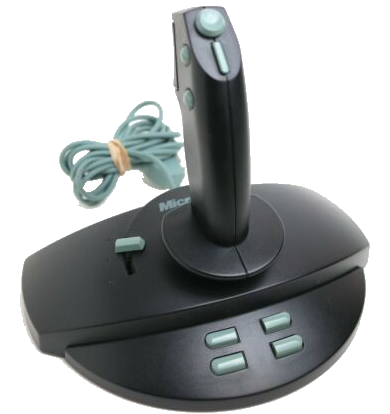 Sidewinder 3D Pro Sidewinder 3D Pro
Launched: August 1996
Interface: 15-pin game port
Protocol: Microsoft Digital Overdrive
Number of Axis: 3
Number of Buttons: 8
Price: $59.95 at launch
The Sidewinder 3D Pro was Microsoft's first joystick, introduced in 1995. It was a 3-axis (X, Y, and Z or twist), 8-button stick (4 on the stick and 4 on the base) with an 8-way hat. It was designed to be used with any type of game, so the stick itself was not very ergonomic.
Electronically, the 3D Pro used a digital/analog hybrid design that was intended to correct the outstanding flaws in traditional analog joysticks, such as drift and CPU overhead, by using a digital/optical tracking mechanism to keep perfect track of the joystick, and a digital communication method over the analog game port. However, this digital mode required software support, and could not be used with many DOS games at the time (MechWarrior 2 being the only major exception), as most software and gameports were built completely around an analog design.
"Continuing its prolonged assault on the gaming market, Microsoft recently introduced the Microsoft SideWinder 3D Pro ($59.95).
The other joysticks reviewed here are
all analog in design, meaning that they use devices called potentiometers to sense the stick's location and report it to the game. But the SideWinder 3D Pro uses digital technology to sense stick movements through a series of LEDs.
This is supposed to result in better performance and more precise control, but we were unable to detect any significant difference between the performance of
the SideWinder 3D Pro and any other quality joystick we've used. Also, although the joystick is designed to be used with Windows 95 (it works fine under DOS, too), we had trouble calibrating it using the Windows 95 joystick applet.
Other than Mech Warrior 2 and Microsoft Fury3, no games currently take advantage of the SideWinder 3D Pro's digital capabilities. Both of these games responded well to the stick's input, however. With luck, we'll see more Windows 95 games in the near future that include native support for the SideWinder 3D Pro.
In the mean time, the SideWinder 3D Pro is a fine joystick for DOS games. It is solid, well designed, and fits comfortably into the hand. The handle twists to provide a rudder control, and a throttle control is located on the heavy base. The stick can also emulate CH and Thrustmaster joysticks.
It's great for both high-end flight sims and down-and-dirty action games."
Michael E. Ryan, PC Magazine, February 1996
"Microsoft surprised more than a few people when it introduced the SideWinder 3D Pro joystick last year. The 3D Pro turned out to be a much better and more reliable joystick than most critics (including us) expected. In fact, the 3D Pro is so good and so popular that it will be a tough act to follow."
PC Magazine, November 1997
Additionally, some soundcard gameports, and so-called accelerated game-ports - which attempted to resolve CPU overhead issues presented by polling the gameport directly themselves - such as those produced by Gravis, would not always be able to handle the stick in digital mode.
The 3D Pro had a unique feature in that it could fall-back to an 'analog emulation' mode, where it could emulate either a CH Flightstick Pro or a Thrustmaster FCS (selectable by a switch on the base), in environments where the digital mode would not work. In this mode, manual calibration was required, the four base-buttons no longer functioned, and the joystick would function essentially like a CH Flightstick Pro or Thrustmaster FCS depending on the mode selector switch.
However, on later operating systems the digital mode would be less and less reliable, and on modern PCs most 3D Pro owners can only run in analog mode. The 3D Pro was popular enough to spawn a successor, the Precision Pro, which was a USB device and, while it did not work in DOS at all, was far more reliable under Windows despite quality issues.
More Images
 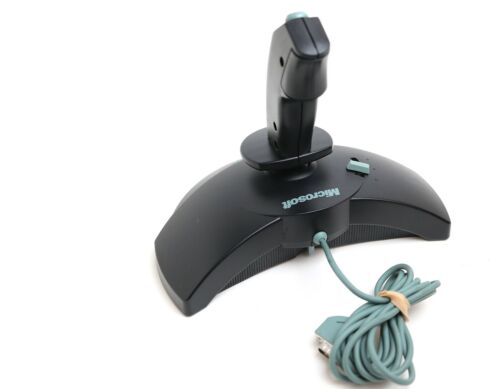 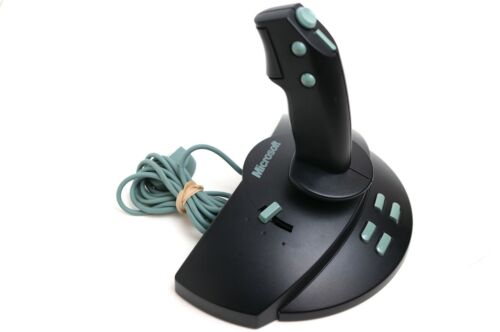 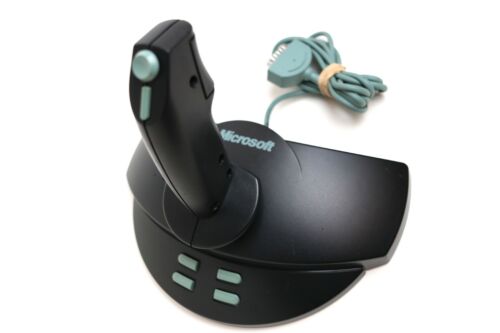 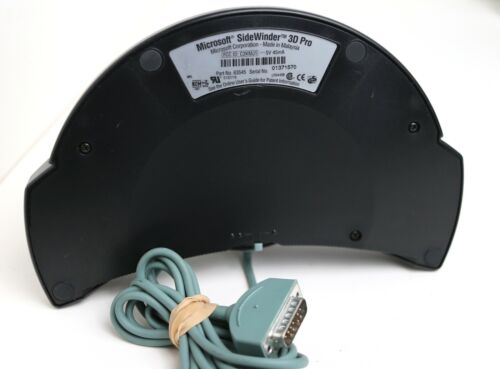  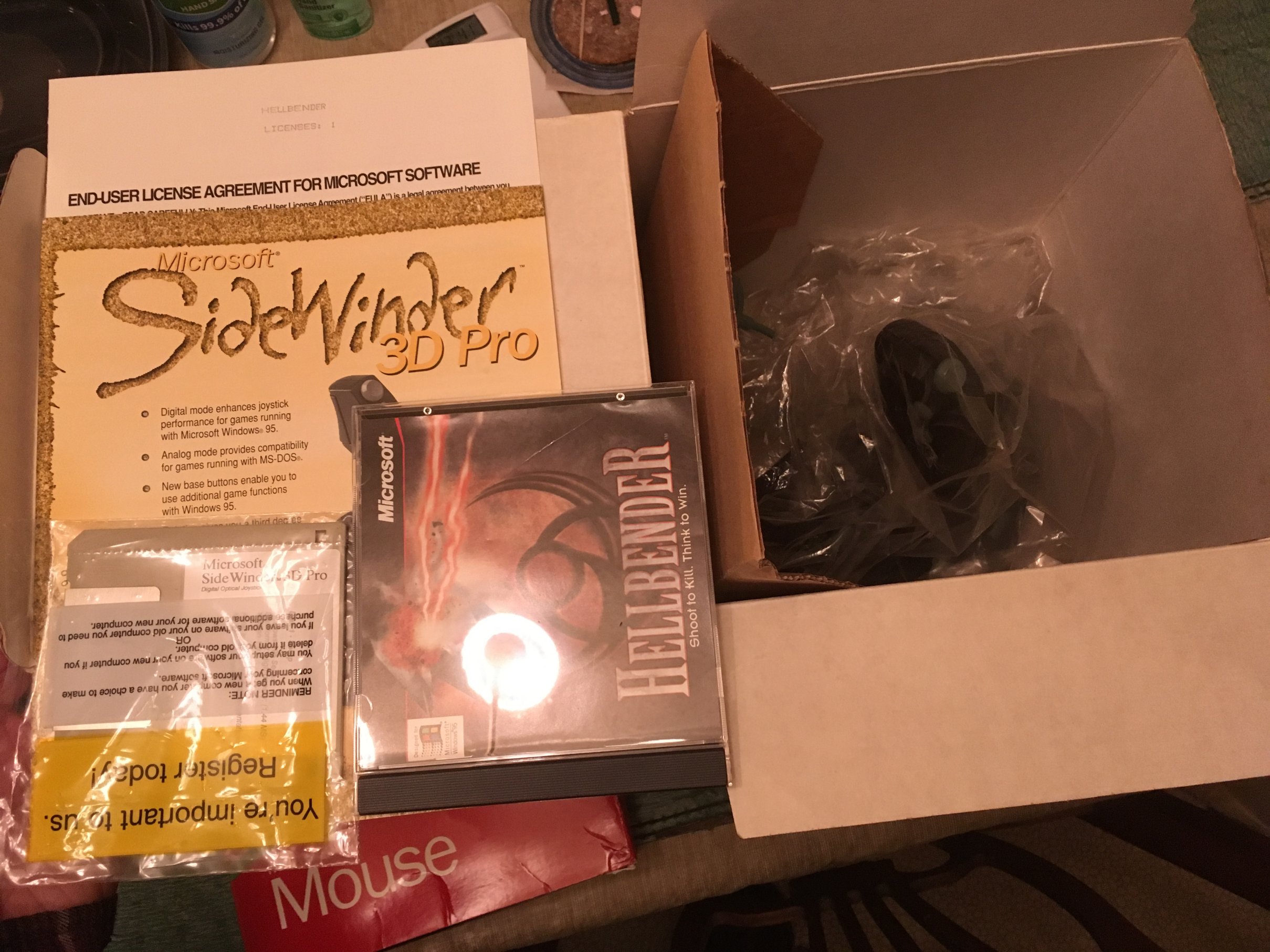
|
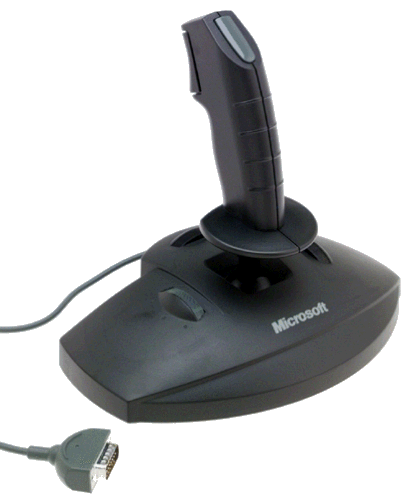 Sidewinder Sidewinder
Launched: October 1995
Interface: 15-pin game port
Protocol: Standard analogue
Number of Axis: 3
Number of Buttons: 2
The SideWinder, aka SideWinder Standard, was a basic 3-axis, 2-button joystick, released around the same time as the 3D Pro.
It featured a trigger button, a thumb button and a throttle wheel on left side of the base. In addition it had two additional dials on the base for adjustment of the stick itself, one above stick and the other to the right of the stick. It used a gameport connector to interface with the computer.
More Images
 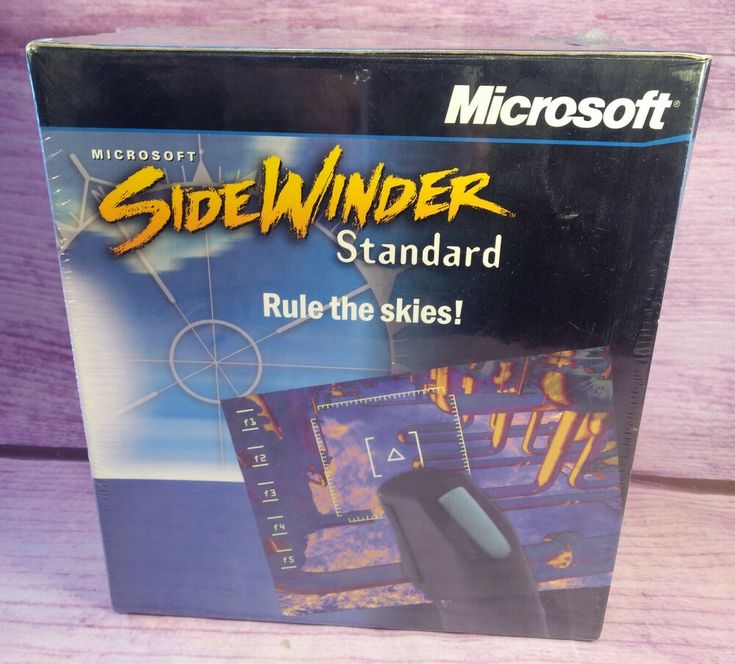
|
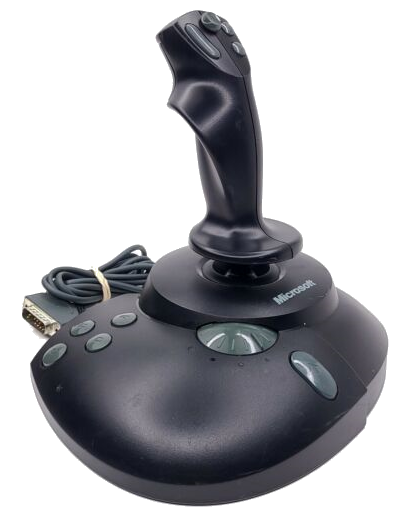 SideWinder Precision Pro SideWinder Precision Pro
Launched: August 1997
Interface: 15-pin game port or USB
Protocol: Microsoft Digital Overdrive
Number of Axis: 3
Number of Buttons: 2
The Sidewinder Precision Pro was released in late 1995, and corrected the ergonomic and electrical issues that plagued the original Sidewinder 3D Pro and Sidewinder joysticks.
The Precision Pro introduced a new stick that was far more ergonomic than the "geometric" design of the 3D Pro. Microsoft also gave the rest of the Precision Pro a more rounded design, replacing the rectangular base buttons with more rounded versions at the top of the base, the slider-based throttle with a wheel-based throttle, and the base itself was made more rounded. The Precision Pro also added a "Shift" button to the base, doubling the number of possible button combinations.
"... But enter the SideWinder Precision Pro - a newly designed variant of the 3D Pro that looks and feels even better than its predecessor.
The most obvious change in the Precision Pro is the ergonomic handgrip. This makes the stick much more comfortable for right-handers. The Precision Pro has four buttons and a hat switch on the handgrip, along with four additional buttons on the base. There's also a rotary-dial throttle control (which is a bit better than the 3D Pro's slider throttle) and a shift button that lets you access a secondary game action for each button.
Last, the Precision Pro includes a rotating handgrip. Depending on the game you're playing, you can use this feature to change your point of view, move your rudder, aim weapons, or strafe from side to side.
Like Logitech's Wingman Extreme Digital, the Precision Pro is digital and provides high performance and programmability. The joystick is easy to install, and its software practically installs itself. The Precision Pro comes with the SideWinder profile editor, which lets you create personalized
settings for your favorite games.
The Precision Pro works well with all types of games. Some players may find the stick's base too big, and flight simulation fanatics may opt for one that feels more realistic but the Microsoft SideWinder Precision Pro is a great product and should meet most users' gaming needs."
SM & Michael E. Ryan, PC Magazine, November 1997
For its electronics, the Precision Pro featured a refined hybrid system, resolving some of the hardware compatibility issues with the 3D Pro. However, with the widespread introduction of USB in consumer computers shortly after the Precision Pro was released, Microsoft soon re-released the joystick in a USB-compatible form (joysticks labeled as Part No. X03-57540. The revised joystick still featured a gameport connector but had additional circuitry for interfacing with USB, and was bundled with a USB converter (see pic below). The creation of the USB converter bypassed the problems with the analog gameport entirely, and as a result became the true solution to the electrical problems. However, due to a flaw in the design of the Precision Pro, in rare cases the stick would build up a static charge in its electronics and require either a complex process to discharge that was not always successful, or simply needed to stay unpowered for a number of hours to slowly discharge on its own. This is also one of the first joysticks to use light sensors instead of potentiometers so it required no calibration, and thus had no electronic moving parts. The only moving parts were mechanical on the throttle and joystick pivots which gave this joystick virtually unlimited lifetime. The Precision Pro 2 had reintroduced potentiometers to save money and thus their lifetime was limited to wear and tear of the potentiometers.
More Images
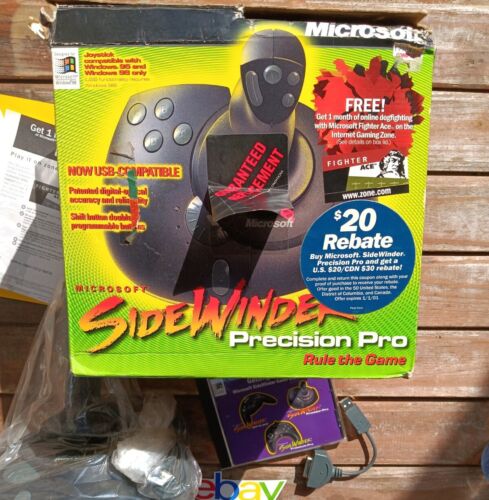 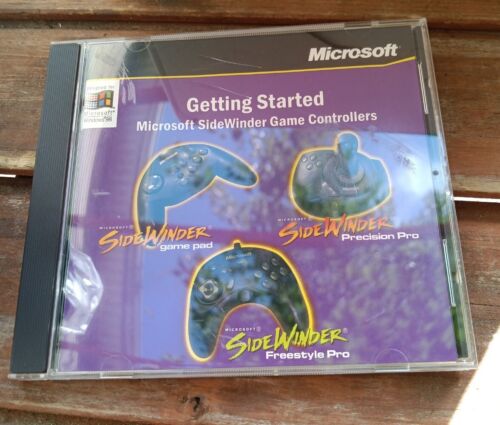 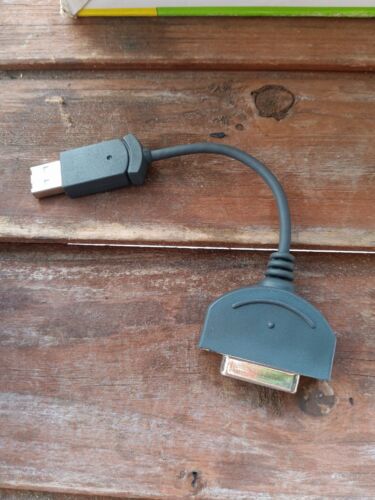 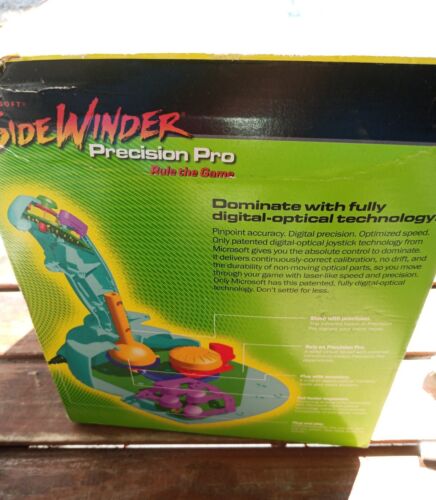 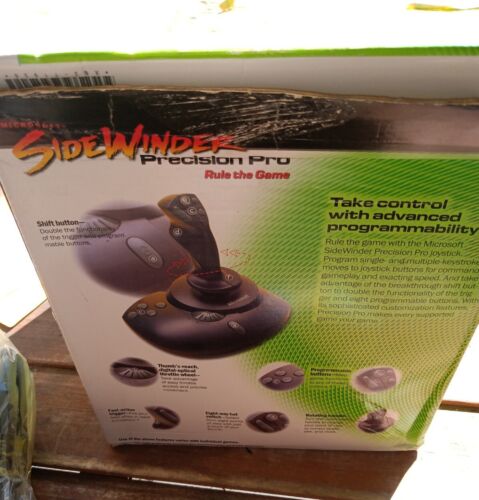 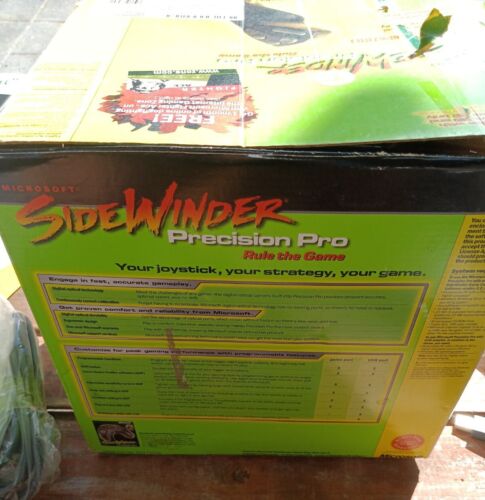
|
 SideWinder Force Feedback Pro SideWinder Force Feedback Pro
Launched: August 1997
Interface: 15-pin gameport
Protocol: Microsoft Digital Overdrive
Number of Axis: 3
Number of Buttons: 2
Built on the design of the Precision Pro, the Force Feedback Pro differed only in the inclusion of motors for the force feedback effects, and the lack of USB compatibility. Due to the inclusion of the motors, the Force Feedback Pro was significantly larger and heavier than the Precision Pro, making it easy to differentiate between the two.
"If you like to feel a bit more involved in your games, take a look at the Microsoft SideWinder Force Feedback Pro ($150 street; Microsoft Corp. 800-426-9400, www.microsoft.com).
This joystick is based on the same design as the SideWinder Precision Pro but uses force-feedback technology to respond physically to input from software. This means that the joystick shakes and jumps when you perform certain actions (such as firing a machine gun) in games that support the technology.
The only other force-feedback joystick currently on the market is CH Products' Force FX. We liked the Force FX but felt that it
was too big and too expensive ($249 list). By contrast, the Force Feedback Pro delivers all the tactile benefits of the Force FX in a smaller, more ergonomic package and at a lower price. Additionally, the Microsoft stick allows you to adjust the degree of feedback through its calibration applet. Not a bad package, if you're into funky toys."
Michael E. Ryan, PC Magazine, November 1997
As the PC joystick port is input-only, the only way for data to be sent to the joystick (to trigger force feedback events) is to use the MIDI capabilities of the port. This extension to the original gameport, first popularised by Creative Labs in their early sound cards, was intended to allow MIDI instruments to be connected to the joystick port but is used here to provide bidirectional communication with the joystick instead. Force feedback events are triggered by messages on MIDI channel 6, with effect data uploaded via SysEx messages. This means that force feedback would be unavailable on the earliest of PCs, where the gameports lack MIDI functionality.
More Images
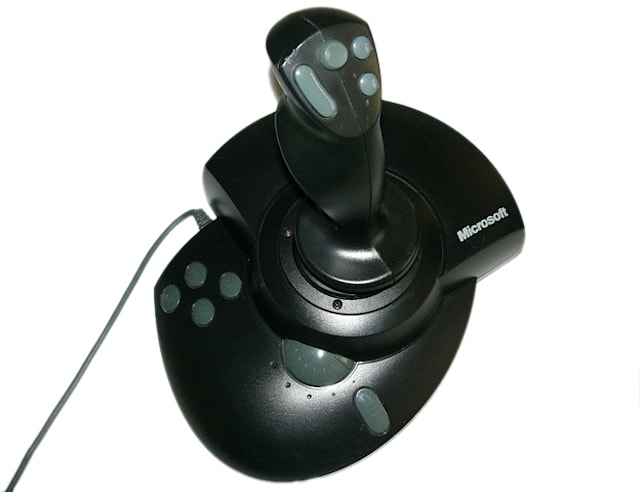 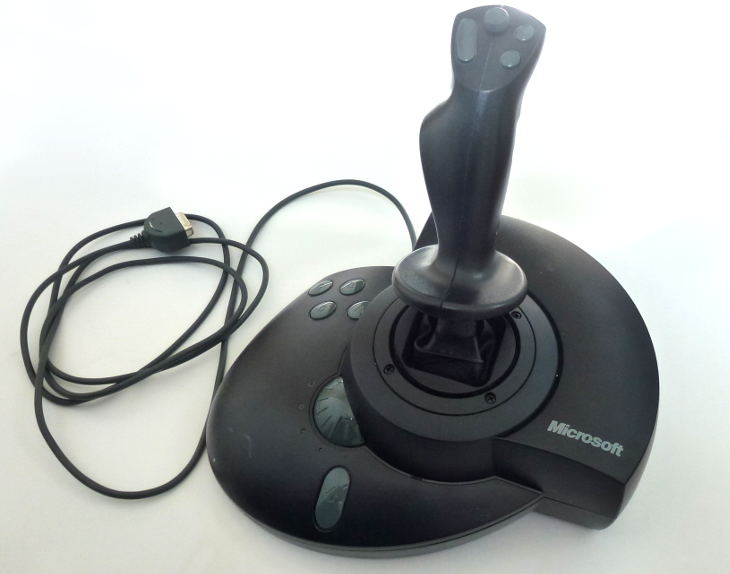 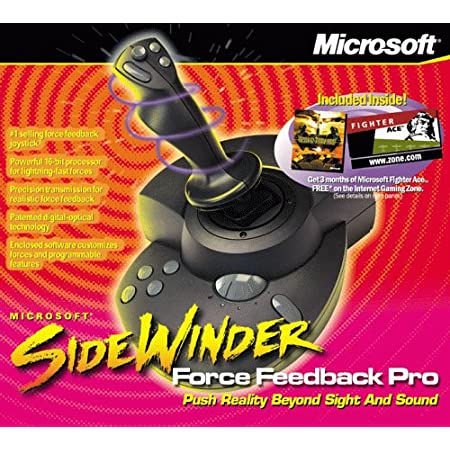 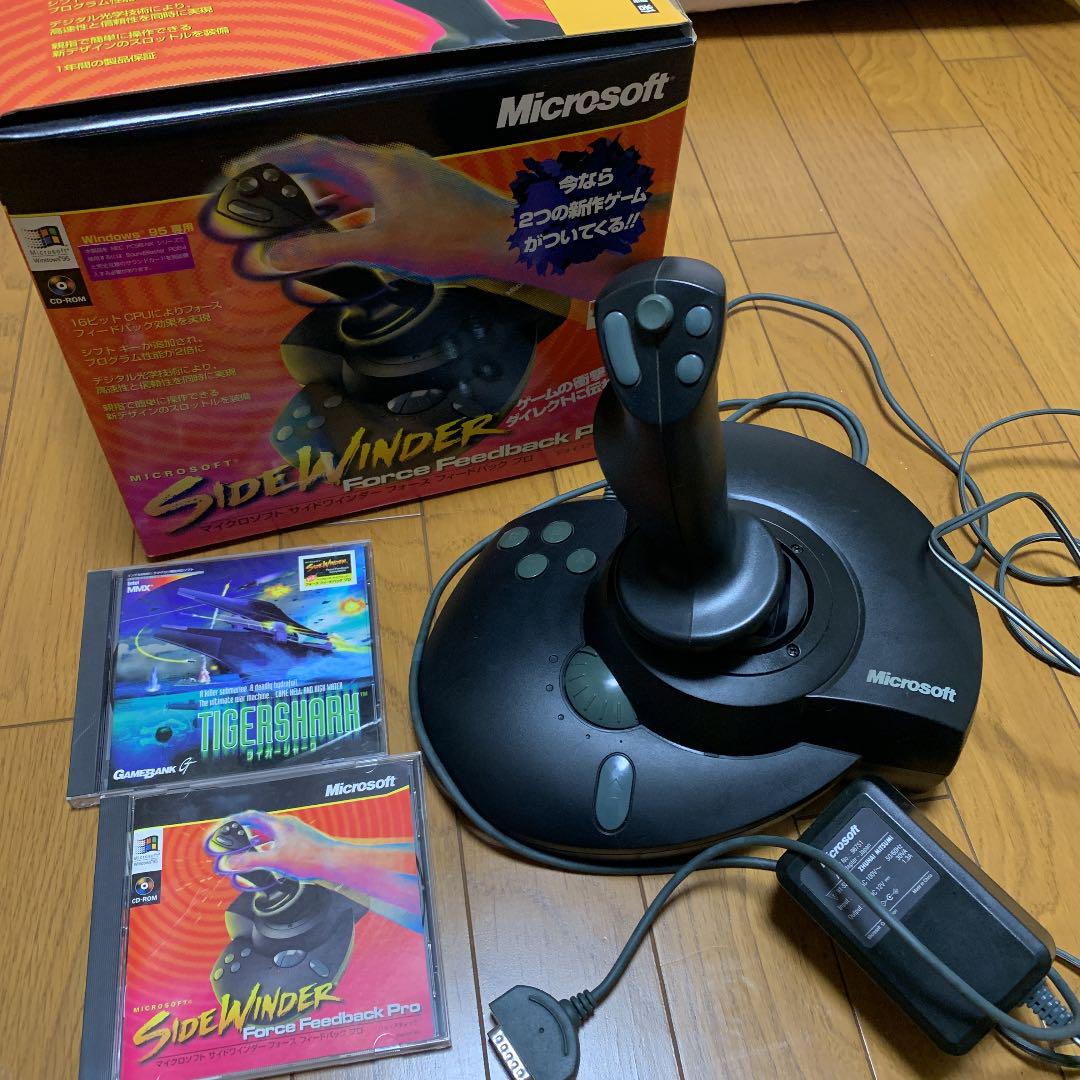 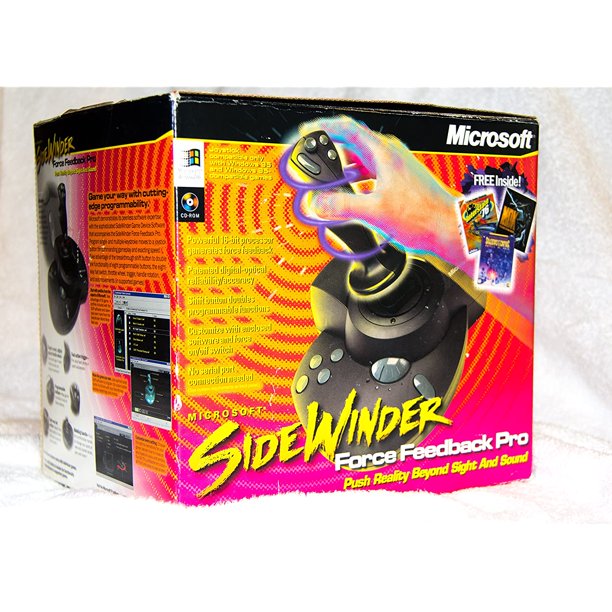 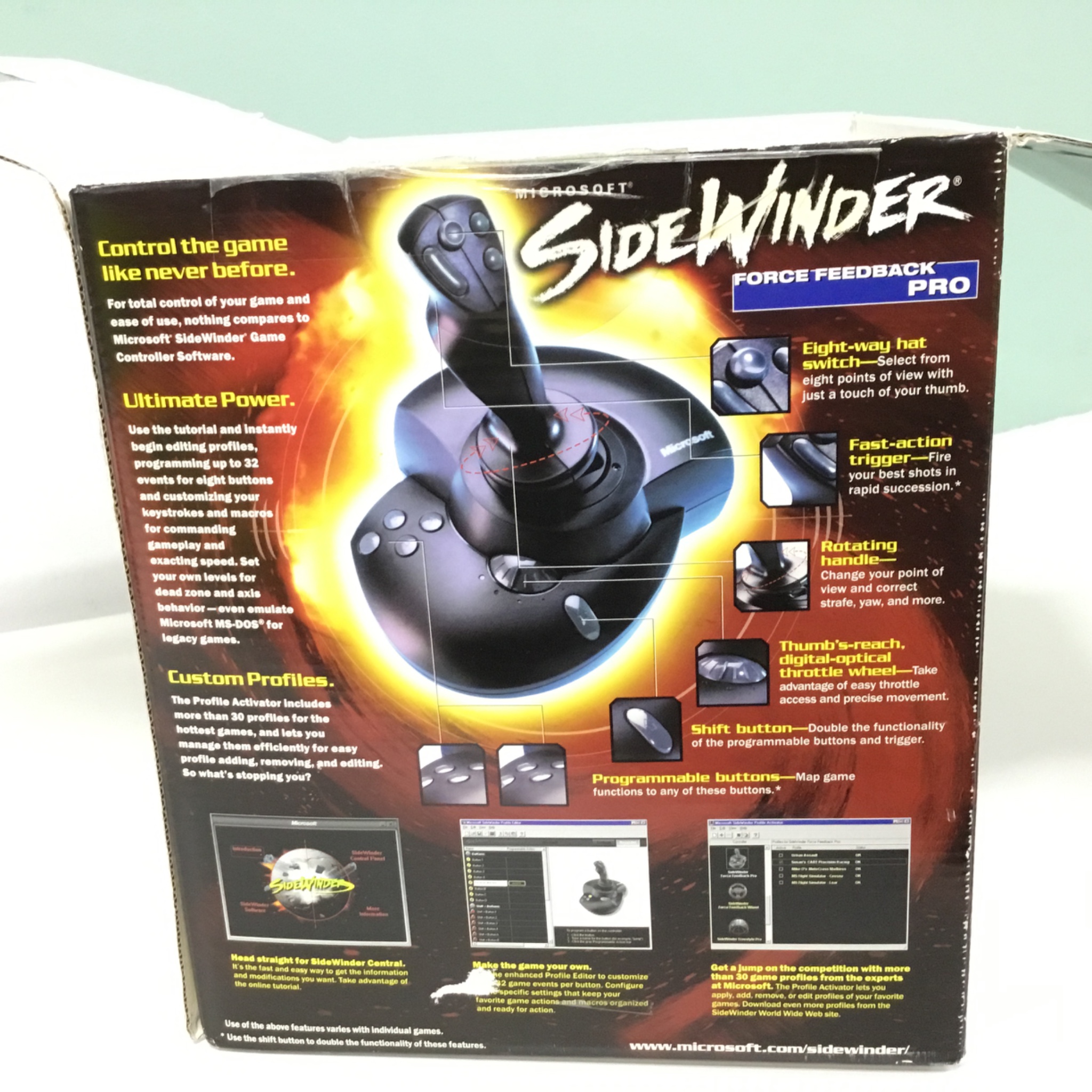
|
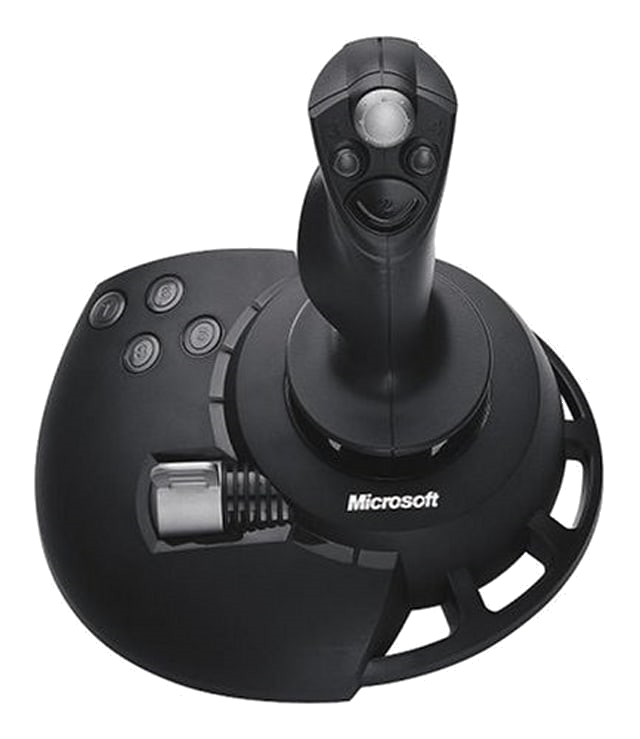 SideWinder Precision 2 SideWinder Precision 2
Launched: July 1998
Interface: USB
Number of Axis: 3
Number of Buttons: 2
The basis of Microsoft's last generation of SideWinder joysticks, the Precision 2 design was a further refinement of the previous Precision Pro.
Compared to the Precision Pro, the Precision 2 dropped the Pro's shift button, replaced the throttle wheel with a more traditional lever, and rearranged the face buttons on the stick into a symmetric design. The Precision 2 also dropped all gameport compatibility by only shipping in a USB version, and was slightly smaller and lighter than the Pro. In spite of being Microsoft's 2nd-generation USB controller, the Precision 2 in particular seemed to suffer more from the USB SideWinder's long-standing static buildup problem than the original Precision Pro.
"Even though it doesn't include a scroll wheel, a super-heavy base, or any of the fancy-schmancy force-feedback effects of the Logitech Strike Force 3D, the SideWinder Precision 2 is unbeatable if you're looking for a mid-priced stick with an awesome button layout and razor-sharp targeting accuracy. It also offers the best layout for small-to-medium size hands, with buttons mere millimeters away from where small-to-medium size fingers tend to rest. Ham-fisted gamers, however, might have problems accidentally squashing buttons in the heat of a firefight. Such is the plight of the glandularly gifted.
While some of us sorely missed the hot 'n' heavy
force-feedback effects that the Logitech stick provides, we realize there's an audience - however small and misguided - that prefers feedback-free gaming. If you're one of the minority, the Precision 2 should keep you at the top of the killboard."
Maximum PC, January 2002
More Images
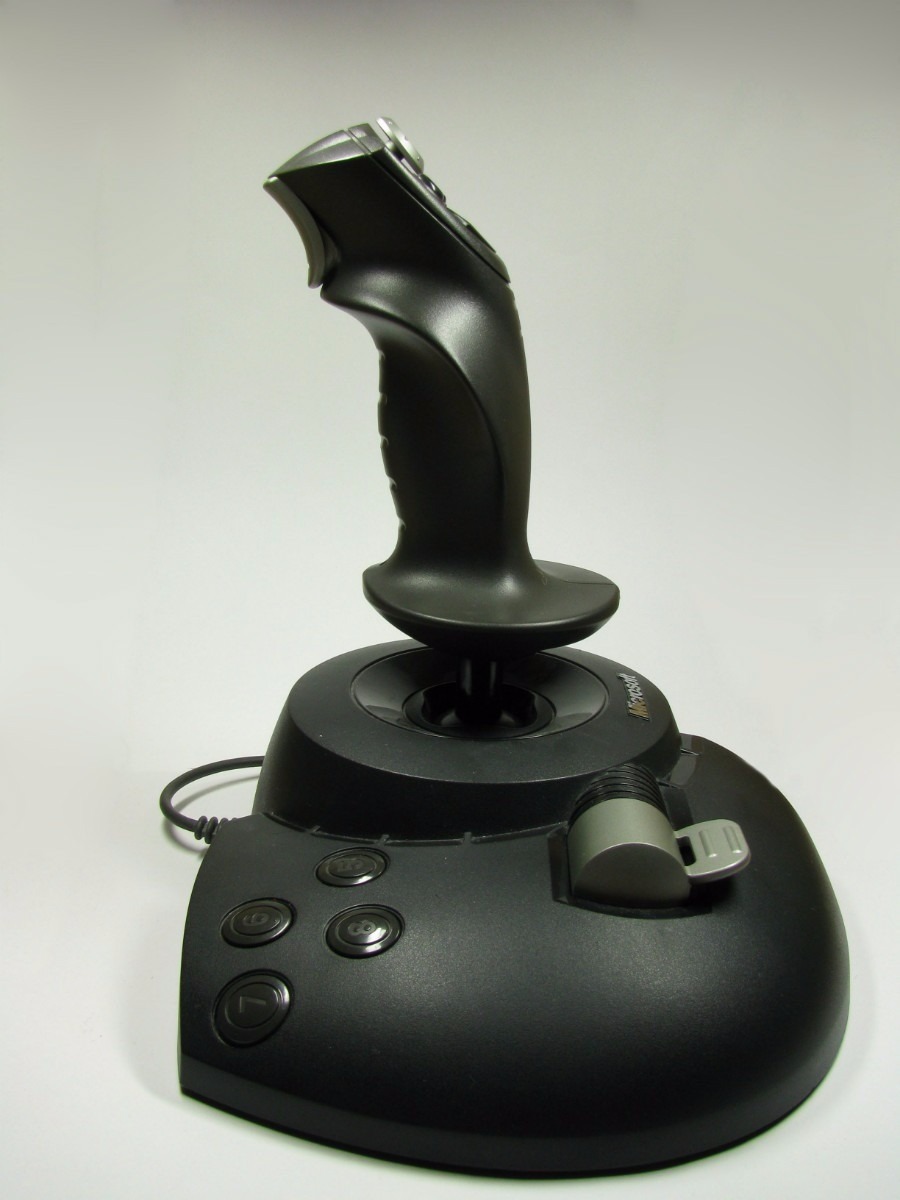 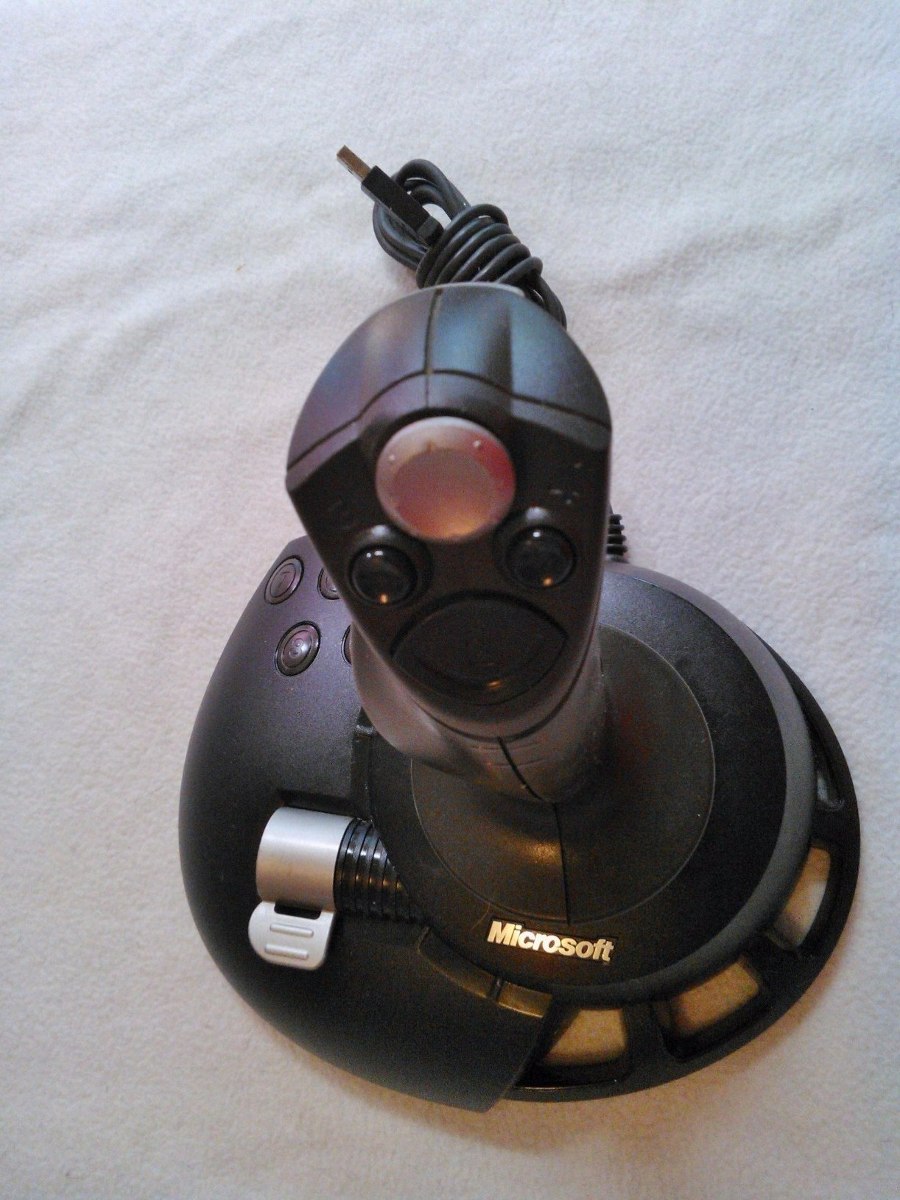 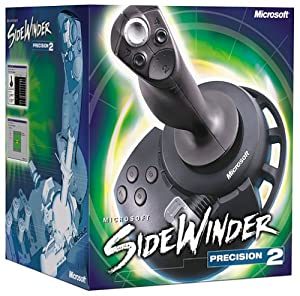 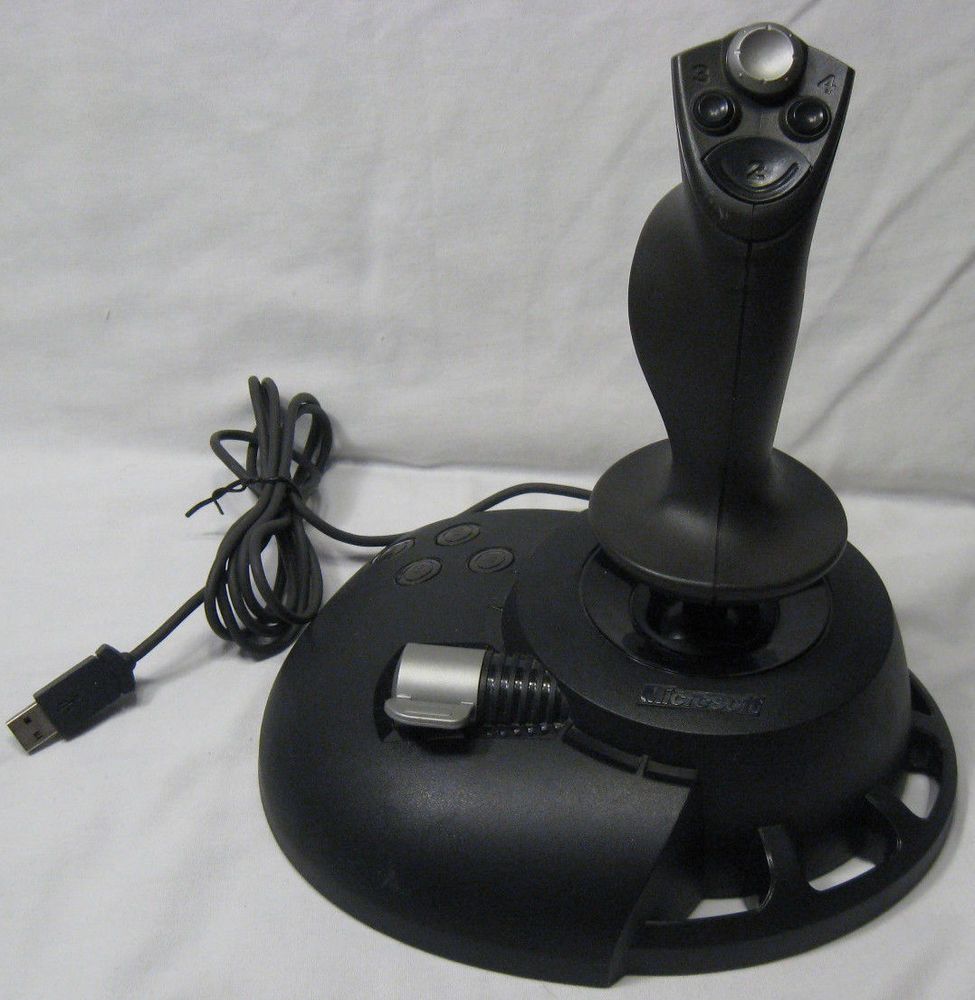
|
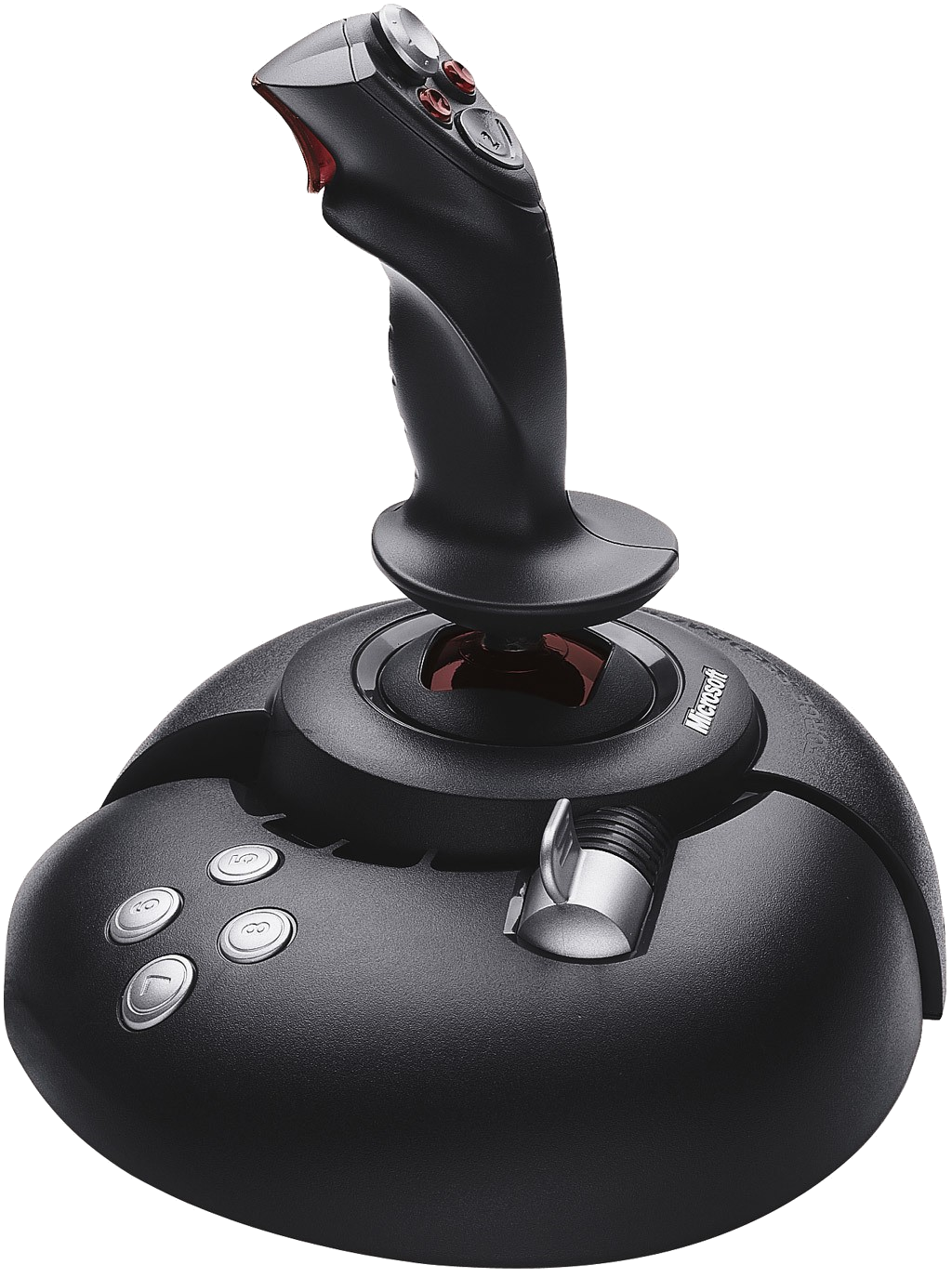 SideWinder Force Feedback 2 SideWinder Force Feedback 2
Launched: 2000
Interface: USB
Number of Axis: 3
Number of Buttons: 2
Original Price: $109
at launch
Along with replacing the Precision Pro with a new design, the Force Feedback Pro was replaced with a Precision 2 derivative, the Force Feedback 2. Compared to the Force Feedback Pro and the Precision 2, nothing new was added to the Force Feedback 2 that wasn't added to the Precision 2, in fact the shift button was taken away. The overall size and weight difference was not so great with the use of smaller motors. This joystick came in two varieties: one version with a silver trigger, and an updated version with a translucent red trigger.
"As the successor to the SideWinder Force Feedback Pro, the Microsoft SideWinder Force Feedback 2 didn't disappoint us. With a large, heavy base, the FF2 is the largest stick we've looked at lately and has a grip that should accommodate both small and medium-sized hands. Revisions include a closed joint at the base of the stick, which fixes the annoying grease leakage of the original stick, and an integrated power supply, so you can kiss the unsightly power brick goodbye. The new button layout is friendlier to lefties, although the stick's shape still favors the non-sinister masses. The FF2 also uses a USB interface, as all good joysticks should.
The force effects of the FF2 feel a little weaker than those of the original, but are still convincing. We like the added stability that the integrated power supply adds to the stick's base. Overall, the SideWinder Force Feedback 2 is a great stick, with realistic, powerful FF effects that add to gameplay, rather than detract from it."
Maximum PC, February 2001
One of the main ideas in the Force Feedback 2 was the removal of the power brick. Since the release of the Force Feedback 2, the stick has garnered a reputation of reliability and resiliency, many Force Feedback 2 sticks are still in use currently.
More Images
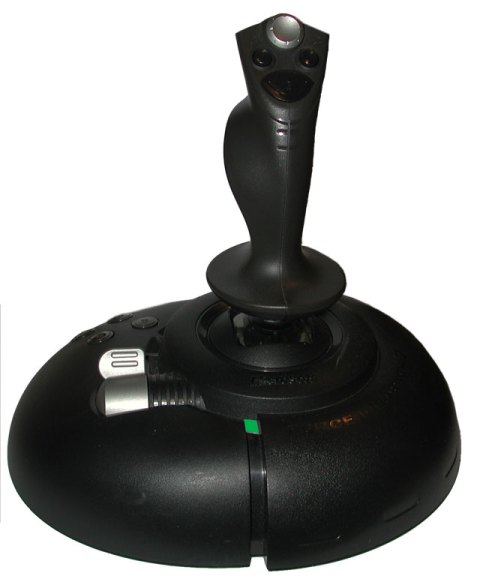 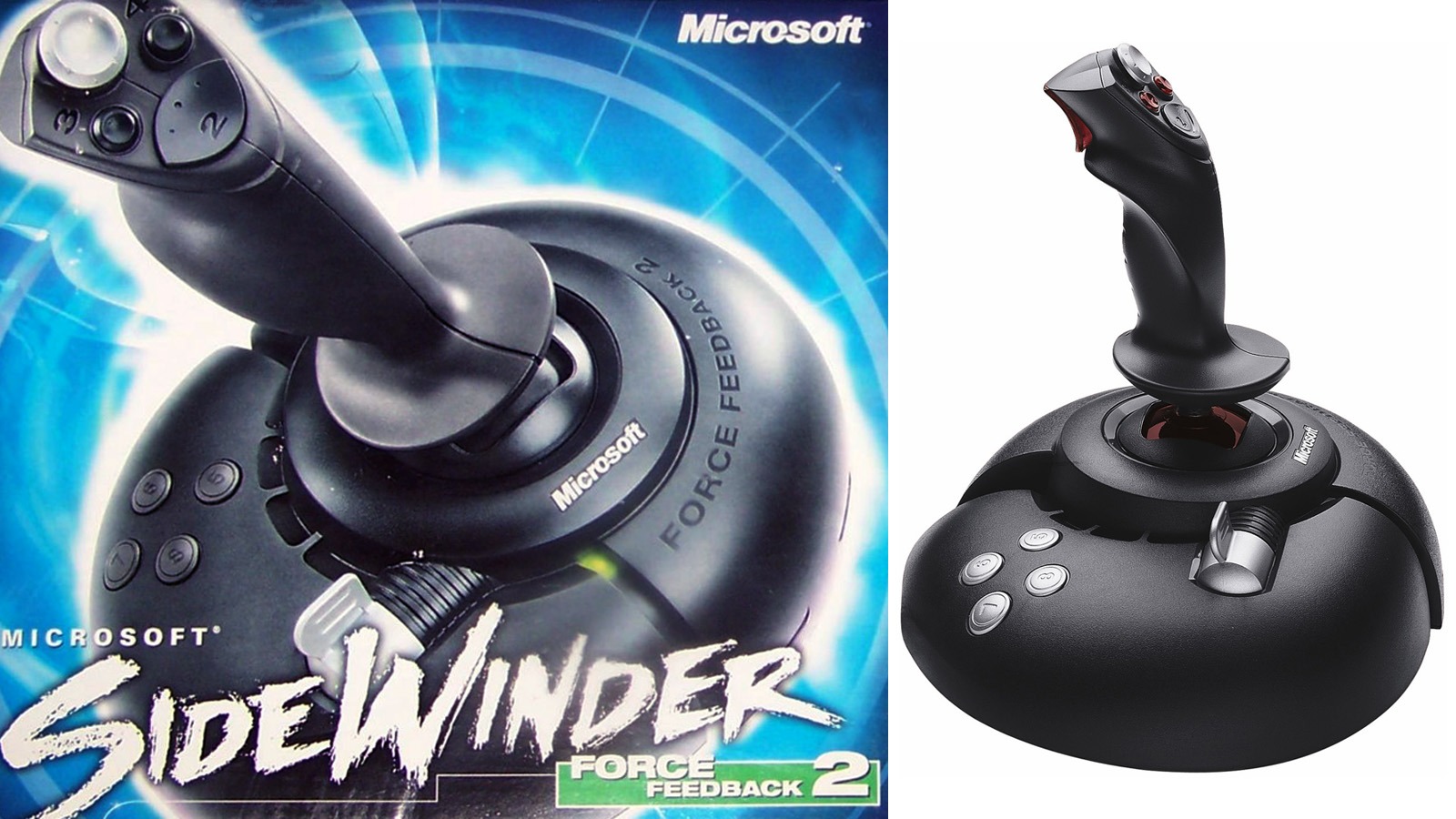 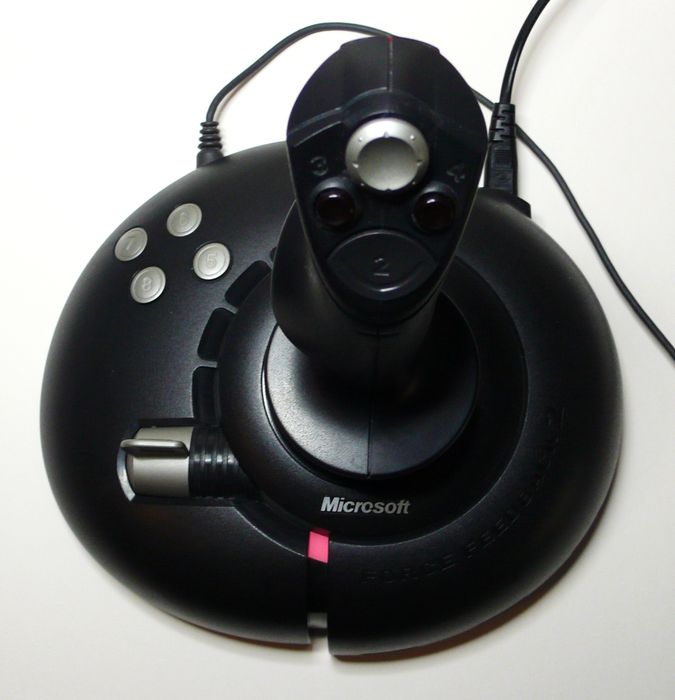 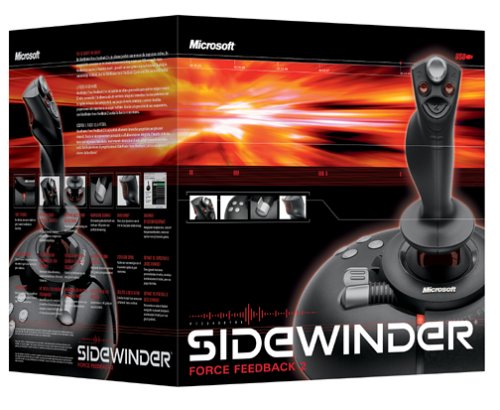 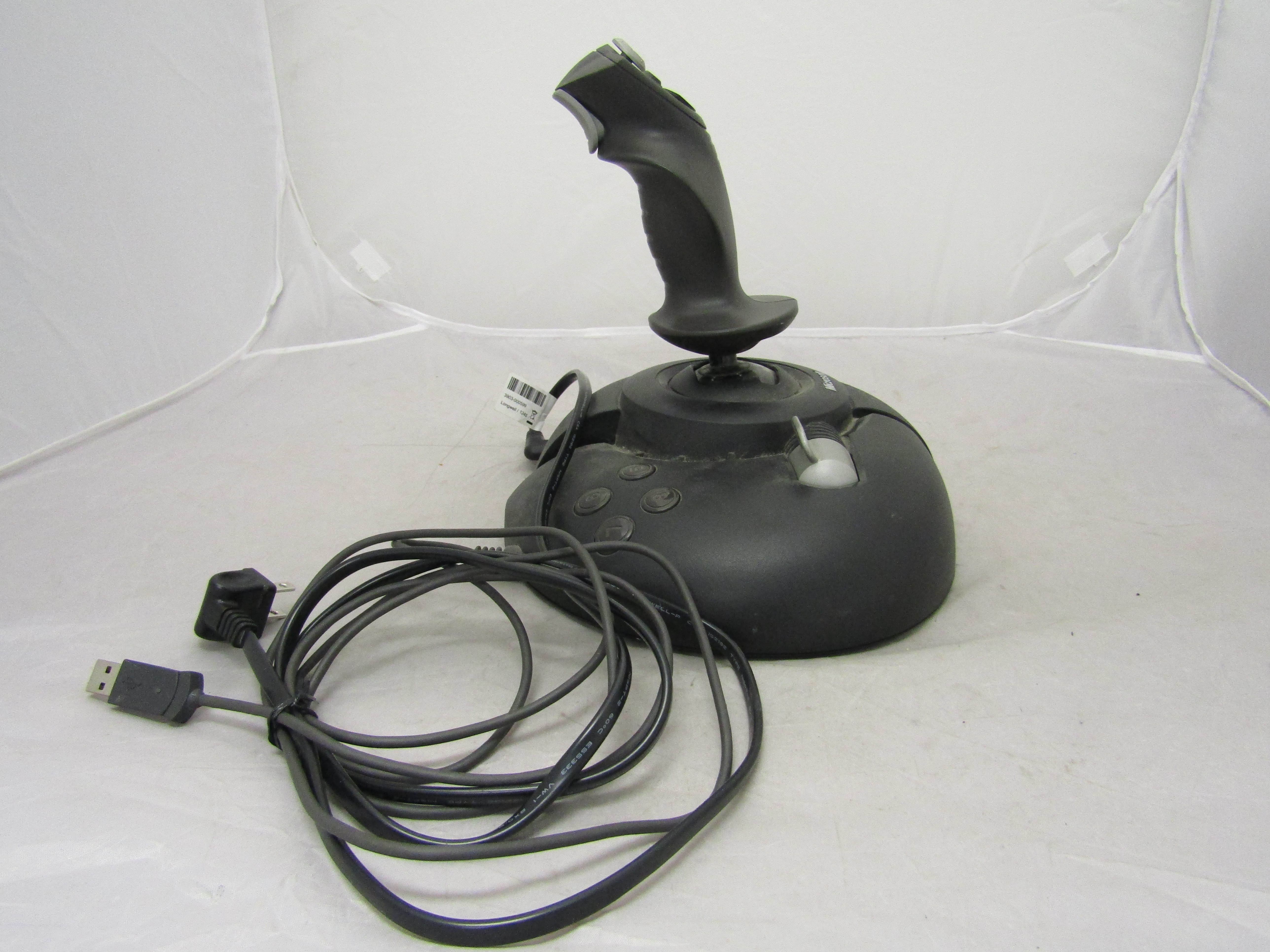 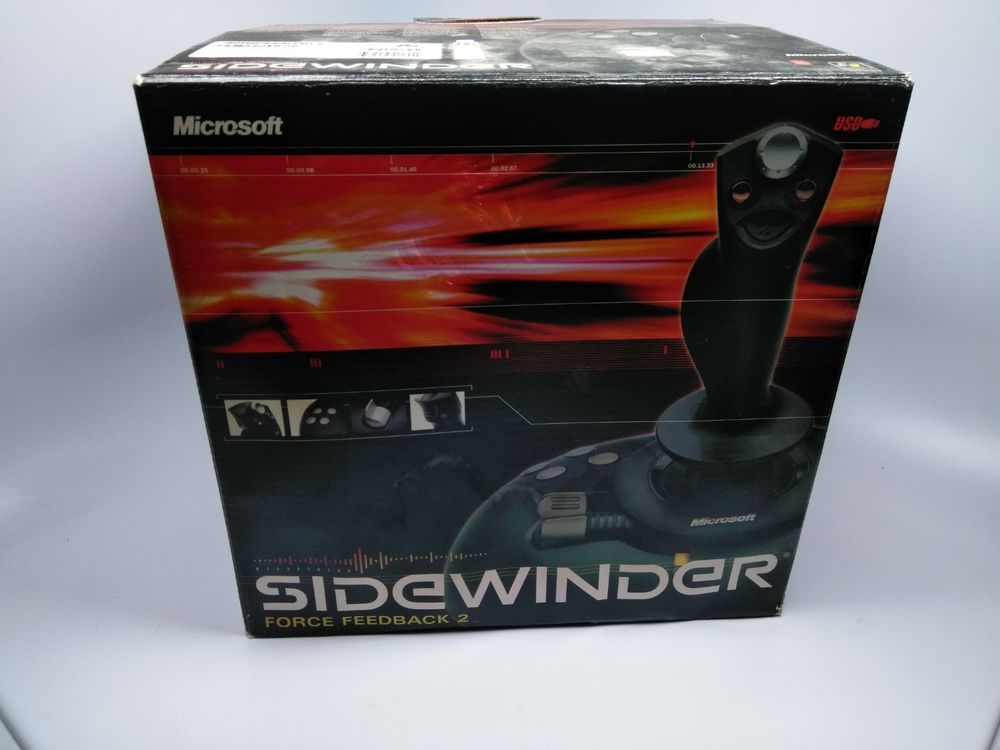
|




































